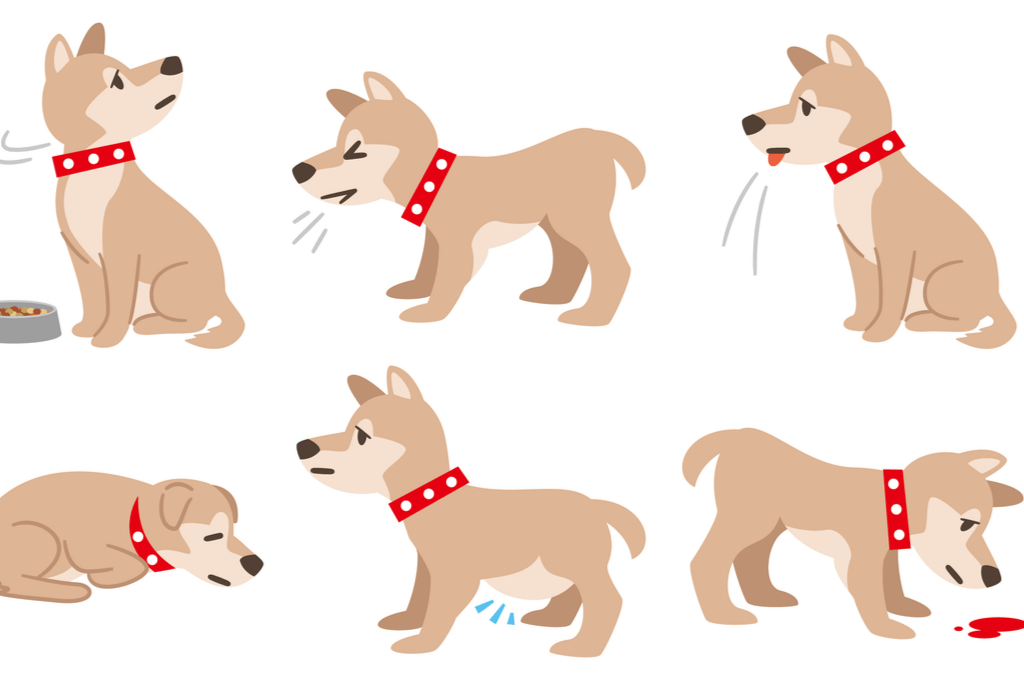Pain symptoms in dogs are situations that you can easily understand if you recognize your friend. You will find some practical information in this article to help you understand if your dog has pain.
The fact that pet owners can spend a long time with their friends requires knowledge of them. In this article, we will tell you some tips to help you understand your dog's pain.
Causes of Pain in Dogs
There can be many different conditions that cause pain in dogs. They may experience pain due to an internal injury (acute) as a result of an accident they have had, they may suffer pain because they have an illness, or dogs may experience pain due to other underlying causes.
The pain your dog is experiencing can be mild or severe. The important thing is to know “ attracts pain, and intervene accordingly.
The conditions that cause pain in dogs are generally as we list below. But other causes can also cause your friend to suffer.
- Cancer
- Arthritis
- Joint diseases
- Infections of the ear, skin and urinary tract
- Inflammatory bowel diseases
- Intervertebral disc disease
- Neurological diseases
- Pancreatitis
- Periodontal diseases
- Cystitis
- Peritonitis
1) Cancer
Cancer, which is one of the causes of pain in dogs, may not pass painfully in some cases or may be mildly painful.
Cancer may not manifest itself in the first stage in dogs as in humans. Cancer, which can manifest itself with more severe pain in the last stage, causes your dog to suffer more severe or less severe pain.
Seen in large breed dogs osteosarcoma (bone cancer) it is a common disease. If you have swelling in your dog's body and deterioration in walking, you should definitely show the veterinarian against the risk of bone cancer.
Osteosarcoma in dogs manifests itself in advanced stages, and unfortunately veterinarians recommend surgery or chemotherapy to prolong the life of the dog a little more or to relieve their pain.
2) Arthritis
One of the most common diseases that cause pain in dogs is Arthritis it is the formation of inflammation and stiffness in the joints, which is called.
It occurs when the ligaments in the atric joints degenerate over time. Although it does not give a lot of symptoms in the first periods, you will see difficulty in walking your dog if it progresses.
With a superficial look, you may not understand that your dog has arthritis. If your dog does not have old joy, if your dog is not as active and energetic as before, you may suspect arthritis.
Often veterinarians for the solution of arthritis in dogs, the, steroids and NSAIDThey recommend anti-inflammatory drugs such as ’ler. But it is necessary to say that there are some compelling aspects of these drugs.
3) Diseases of the joints
Joint diseases are one of the main problems that cause pain in dogs. Although the causes are different, it usually occurs due to the progression of age.
Joint diseases can also occur due to the feeding of your dog or a disease he has had.
If your dog is unable to use mobility as before, if the desire to play is not the same as before, he may be experiencing joint pain. In this case, you can follow a path by showing it to the veterinarian.
4) Intervertebral Disc Disease
Intervertebral (disk disease) is another of the conditions that cause pain in dogs. This disease, which occurs when the discs between the vertebrae of the spinal cord swell or burst into the spinal cavity, causes a loss of mobility in your dog over time.
Especially the very moving ones Dachshund and Tzus Shih this disease, the breed of which is more visible in dogs, is caused by the fact that the dog is overactive, plays and jumps.
A slipped disc can cause conditions such as a neck hernia or a waist hernia from your patty friend. This also affects the passing of painful times.
The 15 Most Common Diseases in Dogs
5) Cystitis
“Pyreway infection” cystitis, also called cystitis, is a disease that is seen by the transmission of a bacterial infection into the urinary tract.
Cystitis, which is among the diseases that cause pain in dogs, occurs when bacteria enter the bladder through the urethra.
In male dogs, bacteria enter through the prostate gland. In female dogs, it is transmitted through the vagina tract.
If your dog is suffering from pain while urinating and this is now manifesting prominently, he has probably contracted cystitis. A urinary tract infection that causes extremely painful conditions is a disease that should be controlled in a short time.
6) Peritonite
Conditions such as abdominal trauma, surgical wounds, bladder rupture, and liver abscesses that cause the dog's abdominal cavity to be injured are called peritonitis. This causes severe pain in dogs.
Peritonitis, which has symptoms such as fever, increased heart rate, vomiting, abdominal pain, weakness, progresses without symptoms in the early period as other diseases. When precautions are not taken, you may begin to notice significant changes in your dog.
Peritonitis is evident after the examination at the veterinarian's control. An ultrasound is taken to see if the dog has free fluid in his abdomen.
Bacterial and chemical peritonitis are conditions that may require surgical intervention. In such cases, it would be more appropriate for a specialist veterinarian to perform surgical intervention in a sterile environment.
7) Ear and Skin Infections
Another of the conditions that cause pain in dogs is ear and skin infections. This can also occur from bacteria, yeast, ear mites, allergies, or foreign objects that have escaped into the dog's ear.
Skin infection that causes severe pain is an early-stage disease. If you have the following symptoms in your dog, he is probably experiencing pain due to an ear and skin infection.
- Redness in or around the ear
- Drawing the ear and its surroundings, and,
- Shaking his head and moving his head more than usual
- Difficulty staying in balance
- Difficulty hearing
In case of obvious ear and skin infections, you should show your dog to the veterinarian without losing time. In case of not taking precautions in the early period, discomforts up to more serious dimensions can be seen.
How Do I Know if My Dog Has Pain?

The diseases and symptoms we described above cause pain in dogs. Make a note of your dog by observing it and report it when you discuss it with your veterinarian. Accordingly, it will be easier to take precautions early.
If you observe the following situations in your dog, you can more easily understand that your dog is suffering from pain.
1) Change in Eating, Drinking, and Sleeping
Dogs try to soothe their pain by sleeping more when they are in pain. But this is not curative for them.
If conditions such as loss of appetite, sleep disturbance have started to appear in your dog, your dog is suffering from pain.
2) The tendency to bark
Although trained, if after a while your dog starts barking again and makes more noise than usual, this indicates that your dog is in pain.
3) Aggressive Behavior
If your pet dog's sociality suddenly deteriorated and his communication with people began to get into a troublesome process, this is a sign that your dog is in pain.
Aggressive behaviors, more reactions to strangers than ever before, and an escape from communication with you may be due to your dog's pain.
4) Over-maintenance
Dogs lick themselves like cats. But dogs don't always do this like cats do. If your dog is licking his paws more than ever, he may be doing so to relieve the pain he is probably experiencing.
5) Change in Breathing and Breathing
Dogs breathe faster than cats. But there is also a norm. If your dog is breathing faster than usual, he may be doing so to relieve his pain.
6) Emotional Change
If you are observing emotional changes in your dog, it may indicate that your dog is suffering from pain. Your cute patty friend may try to express it with his feelings because he cannot verbally tell the pain he is experiencing.
Physical Symptoms of Pain in Dogs
Pain in dogs can manifest itself in the form of physical symptoms, as can be within the framework of the symptoms we mentioned above.
If your dog has the following physical changes, your cute pet is likely to suffer.
- Humpback posture
- Do not have difficulty breathing
- Swelling in any part of the body, bruising
- Backward arched posture
- Flicker
If you don't observe the above physical changes in your dog, your pet is probably in pain. If you are unable to relieve your dog's pain on your own, we recommend that you show it to the veterinarian without wasting time.
You may be interested:
The 9 Most Common Behavioral Disorders in Dogs
The Easiest Dog Breeds to Train
How to Exercise Puppies to Dry Food
The Development Process of Dogs
Sterilization in Dogs Before and After Surgery
Exercises Needed for the Health of Dogs

